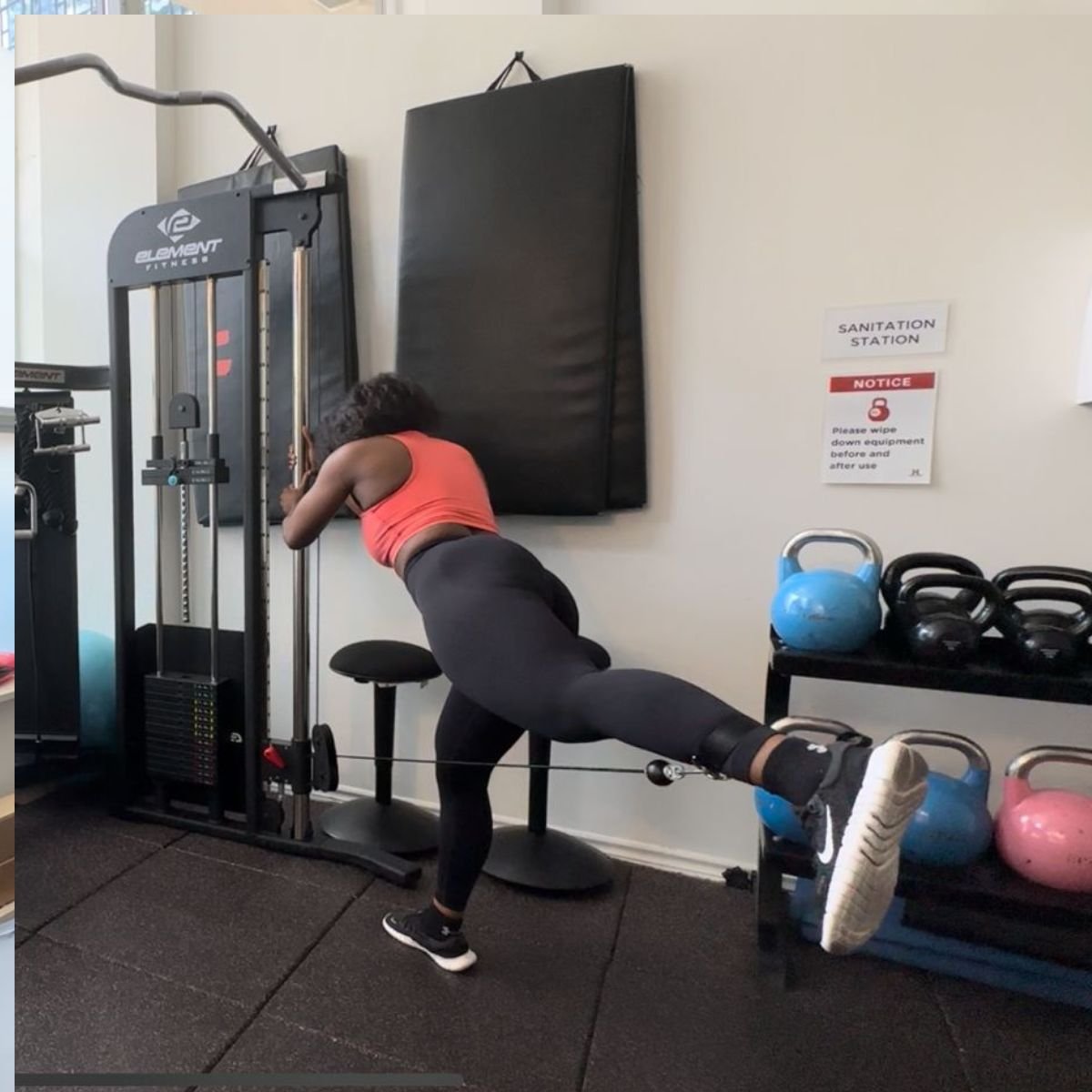Glute Growth with the Cable Kickbacks
Table of Contents
Strong glutes are essential for performance and injury prevention. While compound exercises like deadlifts and squats are excellent glute builders, a go-to isolation exercise to specifically target and activate the glutes is vital for a robust and well-rounded lower body. Glute kickbacks might be the exercise you're seeking. Whether you aim to increase training volume in the glutes or use them as an activation drill before heavy compound leg movements, incorporating glute kickbacks into your routine can yield the results you desire.
What Is a Cable Glute Kickback
A cable glute kickback is an isolation exercise that focuses on engaging the gluteal muscles, specifically the gluteus maximus through hip extension. It involves extending your leg behind you while maintaining a stable core and controlled movement.
Glute kickbacks can be used as an activation drill before heavier leg exercises or as a great way to add more training volume for your glutes without creating much recovery demand for other muscles or joints.
How to Do a Cable Glute Kickback
Attach the ankle strap to the cable machine's low pulley. Set the weight according to your fitness level.
Secure the ankle strap around your ankle. Ensure it's snug, allowing comfortable movement.
Face the cable machine, holding onto it for balance. Your hands should be around waist level, grasping the machine or a support.
Stand a step or two away, creating tension in the cable. The attached leg should be Cnearest to the machine.
With a slightly bent knee, engage your core and glutes. Push your attached leg back and up, focusing on using your glutes rather than your lower back or hamstrings.
At the movement's peak, squeeze your glutes for a moment to maximize activation.
Slowly return your leg to the starting position. Ensure the weight doesn't slam down and maintain muscle tension throughout.
Cable Glute Kickback Form Tips
Engage your core to protect your lower back.
Foster a mind-muscle connection with your glutes.
Avoid overarching your lower back; keep your ribs down and maintain a neutral spine.
Breathe consistently: exhale when extending your leg and inhale when lowering it.
Glute Kickback Muscles Worked
The primary muscle engaged is the gluteus maximus, responsible for hip extension and thigh abduction. The core also works for stability.
Cable Glute Kickback Variations
Standing Glute Kickback
Stand tall and kick one leg straight back.
Glute Medius Kickback
From all fours, lift one leg diagonally outward.
Glute Kickback with Band
With a resistance band around your thighs, perform a kickback from all fours, pushing against the band's tension.
Glute Kickback with Ankle Weights
Attach ankle weights and, from all fours, lift and extend one leg straight back, focusing on squeezing the glutes.
Cable Glute Kickback Alternative
What Is a Glute Kickback Machine
A glute kickback machine targets the glutes effectively. It usually has padded chest support and handles for comfort. To use it, position your foot on a resistance platform. The movement mirrors the cable kickback but offers a controlled setting, ideal for beginners ensuring balance and proper form.

